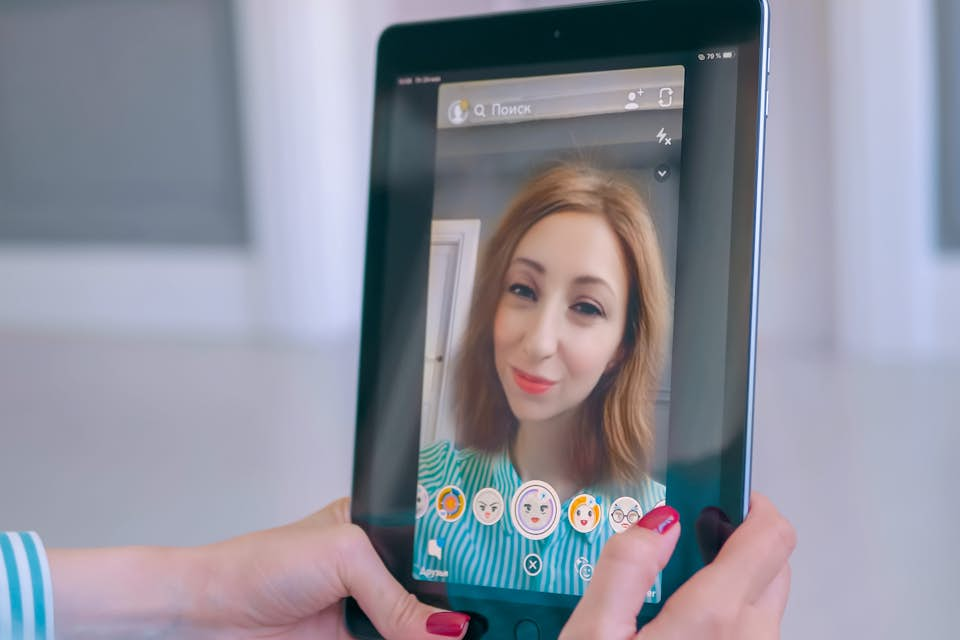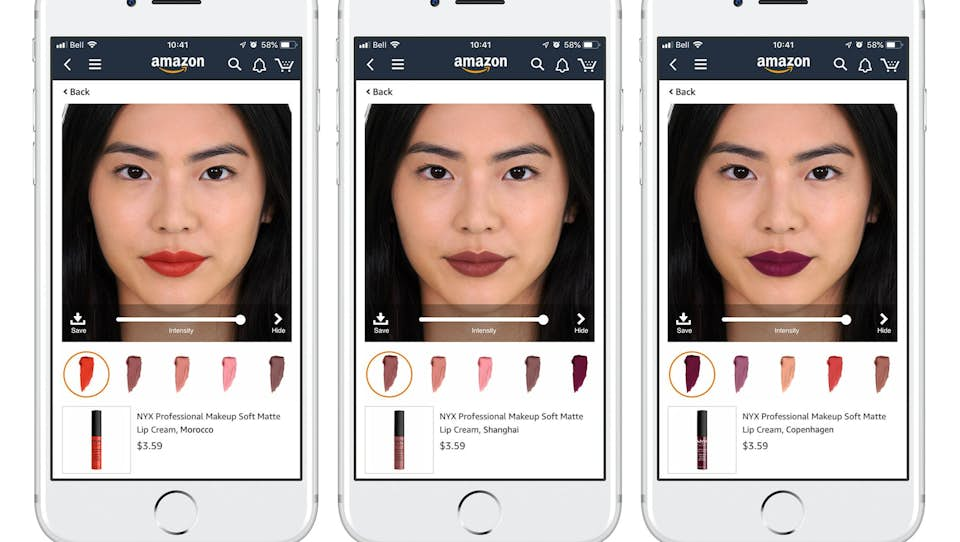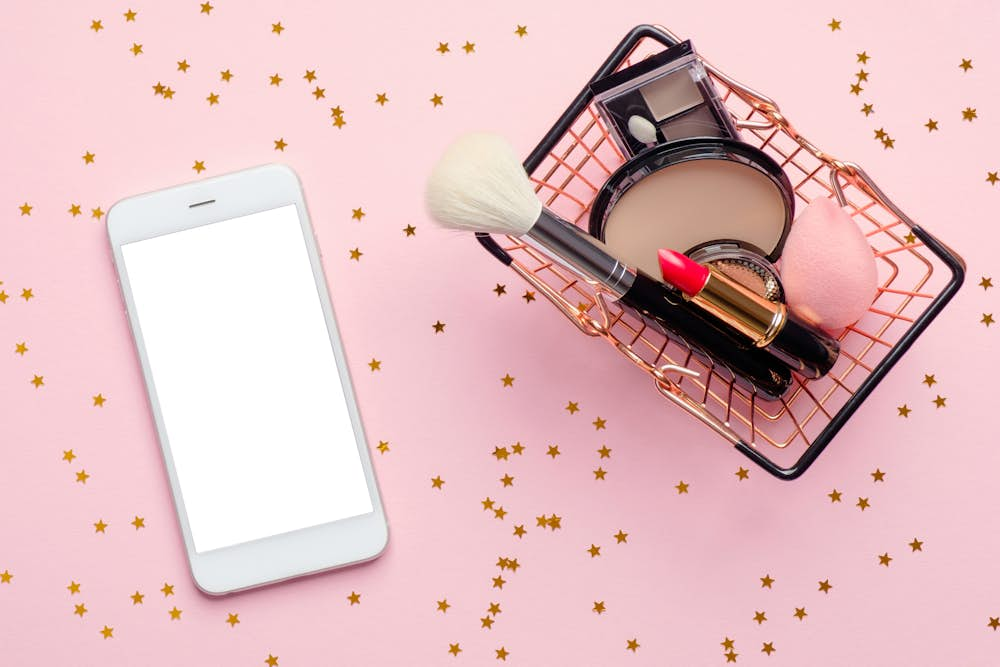AR and user engagement
The latest figures show that around one third of the world's population spend 7 hours/day on their smartphone. Digital applications have become an indispensable channel for brands to engage with consumers throughout their day, and integrate into their lifestyle. All large brands have social media presence, e-commerce sites/applications and representation on e-commerce platforms. However, the digital marketplace is increasingly crowded. While convenience remains a key advantage of e-commerce platforms, it is no longer a differentiator, and the consumer experience tends to be somewhat one-dimensional. There are no sales consultants, testers or other interpersonal/sensory experiences you would find in physical retail. In short, e-commerce delivers on convenience, but leaves a lot to be desired in terms of engagement.
Engagement is where augmented reality (AR) could offer a solution. AR has proven its worth for consumer engagement over the past three years, being at the centre of consumer crazes like social media filters and Pokemon Go. After the launch of Snapchat filters in 2015, the daily active user base for Snapchat increased from 94 to 143 Million within a year, the highest year-on-year increase in the companies history. Pokemon Go, released in July 2016, amassed 500 Million downloads within 2 months, and continues to grow. The potential for user engagement is clear, and consumer product industries have taken note.

After the launch of Snapchat filters in 2015, the daily active user base showed the highest year-on-year increase in the companies' history.
AR and digital beauty
Over the past 10 years, the popularity of online content related to beauty has exploded. Annual Youtube views of beauty content has increased by 8450% since 2008. Make-up tutorials represent a major component of this growth, with consumers increasingly seeking professional advice and guidance for make-up application. Such content provides prime opportunities, not only for product placement, but also for maximising the chances of product satisfaction through successful application, and achieving the desired 'look'.
AR provides a novel and exciting way to engage consumers with digital content showcasing a product or brand. Essentially, it is a completely visual way to imprint a brand or product into a user's surroundings, or even onto the user themselves. The visual nature of AR makes it very amenable to aesthetic goods, such as cosmetics, and the concomitant advances in facial recognition enable consumers to try on cosmetics products virtually and have personalised make-up tutorials. This potential for user engagement has translated to major investments in digital beauty over the past 5 years from cosmetics giants such as L'Oréal, Shiseido, Sephora and Coty. In the sections that follow, we will explore how cosmetic companies are integrating AR into their digital marketing and e-commerce strategies, including virtual make-up application, Virtual beauty assistants and social media integration.
Virtual make-up application
The core concept behind the majority of AR beauty technologies is the virtual application of make-up. They are essentially a sophisticated version of Snapchat filters, which digitally superimpose make-up onto the image of the user. This allows the user to try out different make-up colours and styles instantaneously, with applying and reapplying products.
The virtual make-up craze was seeded in non-cosmetics companies specializing in facial recognition technologies and AR, which were subsequently acquired by cosmetics giants. Key players include ModiFace (acquired by L'Oréal), which was spun out from Stanford University and the University of Toronto in 2006, and Giaran (acquired by Shiseido). The first consumer virtual beauty app was YouCam, developed by Perfect Corp and launched in 2015. The first version of the app, dubbed Beauty 2.0, allowed users to try-on different make-up styles and looks. To date, the app has amassed over 700 Million downloads.
Shiseido's TeleBeauty (2016)
In 2016, Shiseido launched TeleBeauty, the result of a collaboration with Microsoft Japan. The app uses AR technology to virtually apply make-up specifically for teleconferences. The rationale behind this technology was that many women work remotely and conduct their business virtually, so TeleBeauty provides a way to appear at your best without the need to physically apply make-up. The app corrects skintone, blurs the background and applies make-up to the user.
Sephora's virtual artist app and L'Oreal's virtual try-on tool (2017-18)
The Sephora virtual artist app, launched in 2017, incorporates the AR technology into an online shop. This allows customers to test products virtually. The app was developed in partnership with ModiFace, which was subsequently acquired by L'Oreal in March 2018. Soon after this acquisition, L'Oreal launched their own AR makeover platform, called the virtual try-on tool. The tool operates via the website, rather than requiring an app download.
Coty's try-on experience (February 2018)
In February 2018, Coty also launched a full look mobile/web try-on experience for their Covergirl brand. The platform allowed users to try on five Spring 2018 looks through the camera on their smartphone or computer. The company also partnered with Walmart to enable purchasing of the products in the app via a featured assortment at Walmart.com.

L'Oreal launched the virtual try-on tool soon after acquiring Modiface in 2018.
Virtual Beauty Assistants
Virtual beauty assistants build on the virtual makeover technology adding an additional layer of interactivity. With this functionality the apps not only show how the products will look, but also offer make-up tutorials or real-time consultation with a beauty expert. The virtual beauty assistant can provide advice for make-up application, training on how to apply make-up and incorporates a more personal/personalized service, bringing AR closer to the experience in physical retail.
The Sephora virtual artist app incorporates personalised make-up tutorials, which demonstrate techniques such as contouring directly onto an image of the user. This allows the user to learn more complicated techniques, traditionally reserved for make-up artists, applied using Sephora's products. The user can follow the stages of application on their own face, and even colour match shades of make-up to match a particular outfit.
Coty/Amazon's "Let's Get Ready" (January 2018)
In January 2018, Coty launched a virtual beauty experience through a partnership with Amazon. The platform, called "Let's Get Ready", is incorporated into the Echo Show smart home device - Amazon's first Echo device with a screen. The application offers on-demand beauty tutorials, occasion-based look planning and integrated product recommendations and shopping opportunities, facilitated through the Amazon retail platform. In December 2018, Coty added virtual assistance for their Clairol hair colour product to the Google Echo smart home device.
Perfect Corp's Beauty 3.0 ( November 2018)
In November 2018, a major update to the YouCam app (Perfect Corp) was launched, referred to as Beauty 3.0. It introduces real-time beauty advisor consultations, where the user can speak directly with a beauty consultant and get instant advice. The app also provides product recommendations, based on skin tone and face shape, making it the first commerce platform which is not brand-specific.

The Sephora virtual artist app incorporates personalised make-up tutorials, which demonstrate techniques such as contouring directly onto an image of the user
AR Beauty and Social Media
Social media has a central role in digital beauty marketing campaigns. With AR beauty tools, users can create personalized content and share it with their network, which also carries the name of the host technologies' brand. Instead of seeing sponsored content with anonymous models demonstrating the products, users will see imagery of their friends and family in the products.
Sephora/Facebook Messenger (May 2018)
In May 2018, Sephora was one of four companies (and the only cosmetics company) included in a beta-test of AR integration with the Facebook Messenger platform. The Sephora messenger bot allows customers to try-on 5 different looks and purchase products directly in messenger. Users can also take photos of the looks, share with friends and book appointments with beauty consultants in the stores. With the Facebook Messenger platform, Sephora reported an 11% conversion increase compared with their mobile website.
L'Oreal/Facebook (August 2018)
In August 2018, L'Oreal announced a long-term partnership with Facebook to develop AR capabilities within the social media platform. The partnership will see L'Oreal, Facebook and ModiFace collaborating to integrate the ModiFace virtual try-on technology with the Facebook camera accessory. A version of this integration for the NYX brand was launched in August 2018.
Conclusions
There is something of an augmented reality tech-race unfolding among the cosmetics giants. Over the past 3 years, huge leaps have been made with this technology - from virtual application of make-up, to the basis for a reinvention of digital retail.
Shiseido was first on the scene, with a focus on providing a service to the consumer during their professional life, while showcasing Shiseido products. Sephora came next, focusing on digital marketing and increasing e-commerce engagement through virtual makeover tools and content, such as make-up tutorials. L'Oreal has taken a very similar initial approach to Sephora, focusing on the use of this technology for digital marketing and e-commerce engagement. However, L'Oreal have also brought development of the core facial recognition technology in-house, demonstrating a commitment to further developing the technology itself. Coty's approach is somewhat distinct and focuses more on the retail mechanism and experience first, through partnerships with Walmart and Amazon, rather than digital marketing within their own e-commerce platforms.
Overall, 2018 was a year of rapid evolution for AR Beauty, and a year that saw long-term commitments to this technology from L'Oreal (ModiFace acquisition) and Shiseido (Giaran acquisition).

Dr Rachel Murkett
Project Director
Dr Rachel Murkett leads strategic intelligence projects at Biochromex. She holds a PhD in Chemistry from the University of Cambridge and has 6+ years of experience as a scientific consultant to consumer goods brands.
